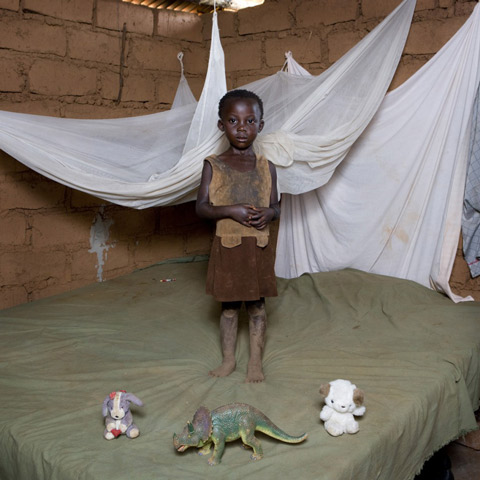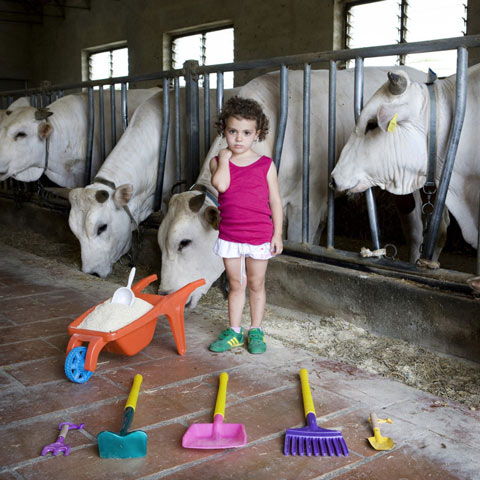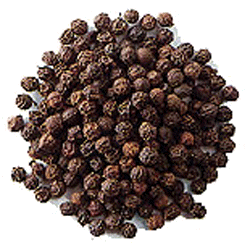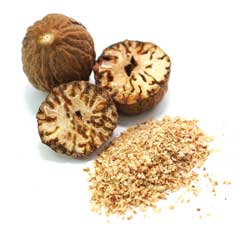random walkway
a serendipitous path
Sunday, May 4, 2014
Today's Bread: 4-Hour Baguettes
I was suffering from a touch of jet lag this morning so decided to get up at 4:30am and try a new baguette recipe a friend sent to me recently (thx CP!). I was a little skeptical going in as baguettes usually take a whole lot longer than four hours to make but I gave it a try.
They came out great. A crunchy crust on the outside that gave way to a custardy and tasty interior.
This one is a keeper. The recipe is here.
Saturday, March 1, 2014
How Wolves Change Rivers
I learned something new recently, the concept of trophic cascade, which is essentially the domino effect played out in nature. Absolutely fascinating.
Thursday, February 27, 2014
A King is Born
Fifty years ago this past Tuesday, Cassius Clay defeated Sonny Liston for the heavyweight boxing championship of the world and boxing was never the same again. (thx CP!)
Here's the entire video of the fight…
I think I'm going to have to watch this one the big screen tonight
Here's the entire video of the fight…
I think I'm going to have to watch this one the big screen tonight
Wednesday, February 19, 2014
The Jump Revisited
Baumgartner's stratosphere jump was both crazy and awesome 18 months ago. Check out the recently released GoPro footage of his dive, it looks even crazier and more awesome now.
Tuesday, February 18, 2014
Storing Memories
The video doesn't look like much but it's pretty fracking amazing.
From I Fucking Love Science...
Scientists have known for a while that our memories are the process are synaptic transmissions in our brain and are stored in neurons, but they have been able to film the actual process for the first time inside of a mouse.
Memories are made by messenger RNA (mRNA) that encode β-actin protein. These proteins are responsible for shaping and structuring cells in the neurons. As events unfold, β-actin protein is responsible for reshaping the neurons and creating a path, retracing the synaptic steps. Memory retention is delicate business, and it is possible for even a single molecule to determine whether or not the memory is stored. Any disruptions in the process can result in a lost memory.
Because the process is so delicate, it has been incredibly difficult for researchers to see it happen in real time. First, they tagged the mRNA which codes for β-actin protein with green fluorescent protein. The researchers then stimulated the hippocampus, which is a small region of the brain that has most of the ability to form and store memories. Following stimulation, the researchers were actually able to witness the synthesis of the β-actin-encoding mRNA in the nucleus of the neuron. The molecules were then tracked out to the dendrites, where communication between neurons takes place.
Monday, February 17, 2014
Rock, House, Scissors
Looks like Sisyphus tripped.
From the BBC…
Dramatic pictures have been released showing the destruction wrought by a huge boulder that smashed through a farm in Northern Italy after being dislodged by a landslide.
The massive rock narrowly missed a farm house, destroyed a barn, and stopped in a vineyard at the property in Ronchi di Termeno. A second giant boulder detached during the landslide stopped behind the house.
The family living there was unharmed in the incident, on 21 January.
A video of the destruction is here.
Wednesday, February 12, 2014
February 12th...
...1809 was quite the day for births. Both Abraham Lincoln and Charles Darwin were born on that day.
Monday, January 13, 2014
When Sharks Tweet
Although it's not a perfect solution to shark attacks, it's nonetheless quite creative.
From NPR...
Government researchers [in Australia] have tagged 338 sharks with acoustic transmitters that monitor where the animals are. When a tagged shark is about half a mile away from a beach, it triggers a computer alert, which tweets out a message on the Surf Life Saving Western Australia Twitter feed. The tweet notes the shark's size, breed and approximate location.
The tagging system alerts beachgoers far quicker than traditional warnings, says Chris Peck, operations manager of Surf Life Saving Western Australia. "Now it's instant information," hetells Sky News, "and really people don't have an excuse to say we're not getting the information. It's about whether you are searching for it and finding it."
"This kind of innovative thinking is exactly what we need more of when it comes to finding solutions to human-wildlife conflict," says Alison Kock, research manager of the Shark Spotters program in South Africa. Kock tells NPR that the project is a good idea — but that people should know that not all sharks are tagged. "It can, in fact, provide a false sense of security — that is, if there is no tweet, then there is no danger — and that simply is not a reasonable interpretation," Holland says, pointing out that the reverse is also true. "Just because there's a shark nearby doesn't mean to say that there's any danger."
Sunday, January 12, 2014
"This Takes the Cake"
At some point you've most likely said or heard someone say "this takes the cake" or "it's a cakewalk". Ever wonder what those phrases mean?
The surprising history from NPR…
The cakewalk was a pre-Civil War dance originally performed by slaves on plantation grounds. The uniquely American dance was first known as the "prize walk"; the prize was an elaborately decorated cake. Hence, "prize walk" is the original source for the phrases "takes the cake" and "cakewalk."
Here's how the dance worked: Couples would stand in a square formation with men on the inside perimeter and then dance around the ballroom "as if in mimicry of the white man's attitudes and manners," according to Richard Kislan. The steps included "a high-leg prance with a backward tilt of the head, shoulders and upper torso."
Plantation owners served as judges for these contests — and the slave owners might not have fully caught on that their slaves might just have been mocking them during these highly elaborate dances.
The Power of Marriage
This video made me smile the first and the second time I watched it.
Congratulation Mr. Duckett and Dr. Jones.
Bag It
A few years ago, people were crying and screaming about the pending bag law that was to go into effect in DC. Their right to take home a free carbon producing, river polluting, landfill swelling plastic bag was being trampled on by Big Brother and folks weren't happy.
As with most change, it just takes time to get used to it.
Next up…styrofoam.
From the District Department of the Environment…
According to the surveys, which were conducted by an independent research firm and funded with fees collected under the Bag Law, eighty percent of District residents have reduced their disposable bag use. Among these, average District resident household use declined from 10 to 4 disposable bags per week. Reinforcing this finding, seventy-nine percent of businesses report that their customers are using fewer disposable bags, with a fifty percent median reduction in bags used.
The surveys also found that the majority of residents and businesses have accepted the Bag Law, with fifty-three percent of residents and sixty-three percent of businesses having strong support of it. Only sixteen percent of residents and 8% of businesses expressed concerns about the law, and the remaining residents and businesses have no feelings about it either way. Additionally, fifty percent of businesses reported saving money as a result of the Bag Law.
“This survey data confirms the significant progress the District is making toward reducing plastic bag litter and restoring health to the Anacostia and Potomac Rivers and their tributaries,” said Keith A. Anderson, Director of DDOE. “I am pleased that the Bag Law has reduced disposable bag use and garnered public support, while also saving money for many businesses.”
A Fish in Every Pot
Brilliant thinking outside the pot.
In 2008, Christopher Charles was living in Cambodia and researching anemia. The condition, which is commonly caused by iron deficiency, afflicts roughly half of Cambodia’s children and pregnant women. Untreated, it can lead to lethargy, impaired growth and cognitive development in children, and increased risks of premature delivery and maternal mortality.
Charles, a Canadian epidemiologist, knew that iron-rich foods and supplements were too expensive for most rural Cambodians. Even cast-iron pots, which safely transmit iron to food as it cooks, were out of reach. But he wondered whether a small piece of iron placed in a standard aluminum pot would have a similar iron-releasing effect. To test his hypothesis, Charles distributed blocks of iron to local women, telling them to place the blocks in their cooking pots before making soup or boiling drinking water. The women promptly put them to use as doorstops.
After talking with village elders, Charles learned of a fish known as try kantrop, which the locals ate frequently and considered a symbol of good luck. When he handed out smiling iron replicas of this fish, women started cooking with them. “People associated it with luck, health, and happiness,” he says. Within 12 months, Charles reports, anemia in villages where the fish was distributed virtually disappeared.
Thursday, January 2, 2014
Busting Out
These things are amazing creatures but I wouldn't hesitate one second to eat one and they're at their best just after molting.
From I Fucking Love Science...
The process starts weeks before actually getting rid of the shell. Enzymes are produced and secreted in order to separate the exoskeleton. The crab also pulls and wiggles around inside the shell to encourage separation. About 24 hours before actually molting, the crab takes in a great deal of water in order to swell up and split a seam that runs along the side of the body. Once the seam has split, the crab merely crawls out. This aspect of molting takes about fifteen minutes.
Once they have shed the old shell, their soft bodies are exposed and vulnerable, though their thin proto-shell hardens up in about a week. Depending on the age of the crab, they can go anywhere from two months to three years before having to molt again. Over the course of a lifetime, a crab will molt up to 20 times.
Wednesday, January 1, 2014
Say Cheese
I've been planning for awhile to turn my experimentation to cheese. After months of procrastination and reading a lot of recipes and websites I finally ordered some cultures and molds a couple of weeks ago.
The thing about cheese, for the good ones we're most familiar with, i.e. Brie, Parmesan, Blue, English Cheddar, etc., it takes from 2-14 months for the cheese to age and ripen. Being relatively impatient to get this going, I decided to try a couple of soft cheeses first since they don't require a cheese press and the aging time is lot less. The first one I made is robiola from raw cow's milk (pictured above). We ate one wheel last Friday and three wheels are still aging in the "cheese cave", aka a mini fridge given to me by a good friend (thx AG!). For lack of a better description it's quite cheesy (clearly my cheese vocabulary needs some work) but with a good tangy flavor that I think will age well over the next month or so.
Next up was chèvre made with raw goat milk from our CSA. This one was easy. It didn't need to age so we ate a good portion of it the next day. If speed of consumption is an indication of it's taste, it went fast.
The recipes for both the robiola and the chèvre can be found here at the appropriately named cheesemaking.com.
Coming up…homemade Mozzarella this Friday for pizza.
Update: Although the fresh robiola was good, I had to toss the 30-day old aged robiola. It was too salty and although I removed all of the mold it still had a moldy flavor to it. C'est la vie.
Tuesday, December 31, 2013
Today's Bread: Hey, Whey
This past week I've been experimenting with cheese making (more on that later) and as a result I have a lot of whey leftover. A quick google of the net and I found a whole wheat bread recipe that calls for whey.
I still need to figure out something to do with the remaining two gallons.
Monday, December 30, 2013
Giving It Away
What would you do it you won the lottery?
One man in Calgary is giving away every penny of his $40 million lottery winnings.
From HuffPo…
[A]fter Tom Crist, 64, won a $40 million lottery jackpot in Calgary, he decided to eschew all things luxury and donate every last penny to charity.
Back in May, Crist -- a retired CEO who plays the lotto by subscription -- got a phone call notifying him that he had won the major jackpot...[A]fter getting the news, the low-key man continued on playing the game of golf the phone call had interrupted and didn’t tell a soul, not even his own kids at first.
Crist plans on putting the money into a family trust fund to be doled out to charities in honor of his late wife who died from cancer in February 2012 when she was 57. He and his children have already selected a number of charities, including the Canadian Cancer Society and Calgary's Tom Baker Cancer Centre, but plan on choosing others as well.
Sunday, December 29, 2013
This Week's Ice Creams (and Cake)
Collaboration is a wonderful thing.
My brother-in-law, among others, is in town visiting for Christmas. We started off the celebratory week by turning a cocktail he's perfected into an ice cream: Black Pepper Ice Cream with Tequila Infused Pear and Fresh Ginger. Delicious!
Later in the week for a family and friends seafood gumbo gathering I churned up three ice creams:
Egg Nog with Rum Soaked Raisins - The brandy was replaced with bourbon and at the last minute I soaked some raisins in rum and added them to the mix.
Lemon and Dried Cherries - This one may be my favorite. It's super lemony and the late addition of dried cherries gives it an extra shot of chewy tanginess.
And at the request of a lovely young girl from Sweden, for Christmas a Strawberries and Cream Cheesecake found it's way from the mixer and to the table.
P.S. The pics aren't mine.
"It's a Wonderful (Communist) Life"
Between 1947-1956 the FBI included "It's a Wonderful Life" on a secret list of films suspected of being Communist propaganda. Oddly, there is also a Ayn Rand connection.
Strange times.
Strange times.
From Federal Bureau of Investigation, file no. 100-HQ-138754 via Aphelis.net...
“IT’S A WONDERFUL LIFE”
Released by RKO Pictures, Inc. on December 19, 1946
Producer — Frank CapraDirector — Frank Capra
Screen play — Frances Goodrick, Albert Hackett, Frank Capra
Cast: Starring — James Stewart, Donna Reed, Lionel Barrymore
According to the Informants [REDACTED] in this picture the screen credits again fail to reflect the Communist support given to the screen writer. According to [REDACTED] the writers Frances Goodrick and Albert Hackett were very close to known Communists and on one occasion in the recent past while these two writers were doing a picture for Metro-Goldwyn-Mayer, Goodrick and Hackett practically lived with known Communists as Lester Cole, screen writer, and Earl Robinson, screen writer. Both of these individuals are identified in Section I of this memorandum as Communists.
With regard to the picture “It’s A Wonderful Life”, [REDACTED] stated in substance that the film represented a rather obvious attempt to discredit bankers by casting Lionel Barrymore as “scrooge-type” so that he would be the most hated man in the picture. This, according to these sources, is a common trick used by Communists.
Toy Stories
 |
| Chiwa – Mchinji, Malawi |
 |
| Pavel – Kiev, Ukraine |
 |
| Alessia – Castiglion Fiorentino, Italy |
With Christmas past and lots of new toys in the hands of little ones here's a look at how toys differ (or not) around the world.
From Feature Shoot…
Shot over a period of 18 months, Italian photographer Gabriele Galimberti’s project Toy Stories compiles photos of children from around the world with their prized possesions—their toys. Galimberti explores the universality of being a kid amidst the diversity of the countless corners of the world, saying, “at their age, they are pretty all much the same; they just want to play.”
But it’s how they play that seemed to differ from country to country. Galimberti found that children in richer countries were more possessive with their toys and that it took time before they allowed him to play with them (which is what he would do pre-shoot before arranging the toys), whereas in poorer countries he found it much easier to quickly interact, even if there were just two or three toys between them.
There were similarites too, especially in the functional and protective powers the toys represented for their proud owners. Across borders, the toys were reflective of the world each child was born into—economic status and daily life affecting the types of toys children found interest in.
Wednesday, December 25, 2013
Subscribe to:
Posts (Atom)






















